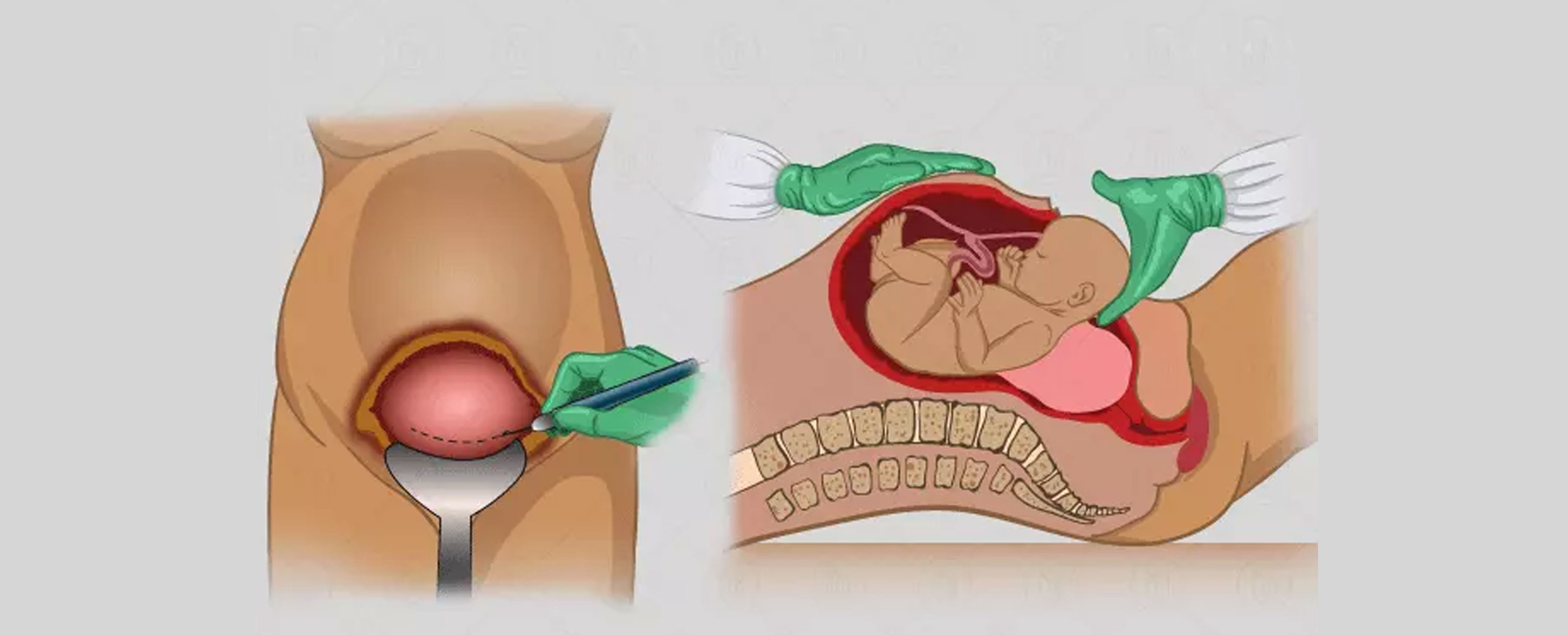
Pregnancy Care
C Section Delivery

A cesarean section, or C-section, involves delivering a baby through a surgical incision in the mother's abdomen and uterus. Sometimes, complications during normal delivery may necessitate a C-section to ensure the safety of both the mother and baby. If you are in Thane and require a C-section, it is crucial to seek care from a qualified C-section delivery doctor in Thane to ensure a safe delivery.
When Should a Doctor Suggest a C-Section?
A doctor may recommend a C-section in the following situations:
- Possibility of having twins or triplets
- Obstructed labor
- Fetal distress inside the womb
- Large or overweight baby
- Complications with the umbilical cord
- Previous C-section births
- Incorrect baby position
- Presence of placenta previa
- Sexually transmitted diseases that could be passed to the baby during vaginal delivery
How is the Procedure Done?
- Anesthesia: Administered to alleviate discomfort.
- Preparation: The abdomen is swabbed with antiseptic.
- Incision: A short horizontal incision is made just above the pelvic region.
- Accessing the Uterus: Deeper tissues are incised, and the abdominal muscles are separated to expose the uterus.
- Uterine Incision: A horizontal cut (low-transverse uterine incision) is made in the lower part of the uterus. In rare cases, a vertical incision may be required.
- Delivery: The baby is pulled out, the umbilical cord is cut, and the baby is checked by a pediatrician.
- Closure: Sutures are used to close the incisions, which will dissolve over time.
Planned C-Section
A planned C-section may be recommended for various reasons:
- Baby's head is not in the correct position as the due date approaches.
- Mother has a medical condition that could worsen with labor and vaginal delivery.
- Mother has an infection or illness that could be transmitted to the baby during delivery.
- Mother is expecting twins or multiples (though not all twin deliveries require a C-section).
- Mother has had a previous C-section (though not all prior C-sections necessitate future C-sections).
Unplanned C-Section
Certain circumstances may lead to an emergency C-section, including:
- Labor stops suddenly, fails to progress, or doesn’t progress normally.
- Complications with the placenta, such as placenta previa, which blocks the cervix and risks detaching from the uterus prematurely.
- Baby shows signs of distress, such as an abnormal heart rate.
- Baby is too large to pass through the vaginal canal.
- Issues with the umbilical cord that put the baby at risk.
Risks Associated with C-Section
- Infection
- Blood loss
- Blood clots in the legs, pelvis, or lungs
- Injuries to nearby structures, such as the bowel or bladder
- Reactions to anesthesia or medication
Recovery Period After C-Section
Recovery period after a C-section is longer than that of a vaginal birth. Physical limitations, such as avoiding lifting anything heavier than your baby, are necessary during the weeks-long healing process. Your doctor will provide guidance on recognizing signs of infection and offer additional postoperative care instructions.
